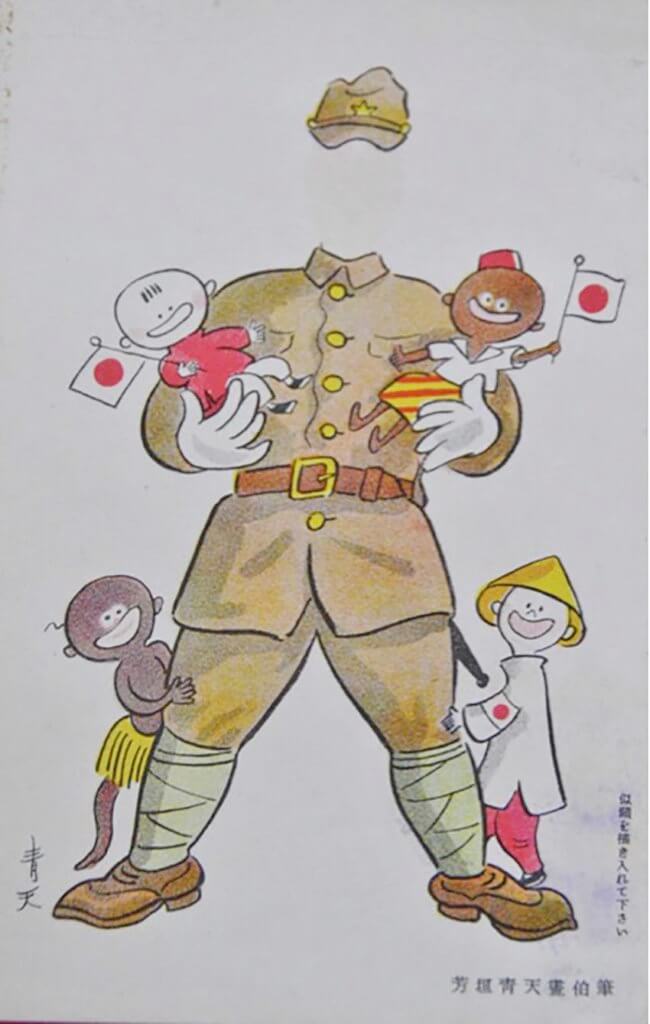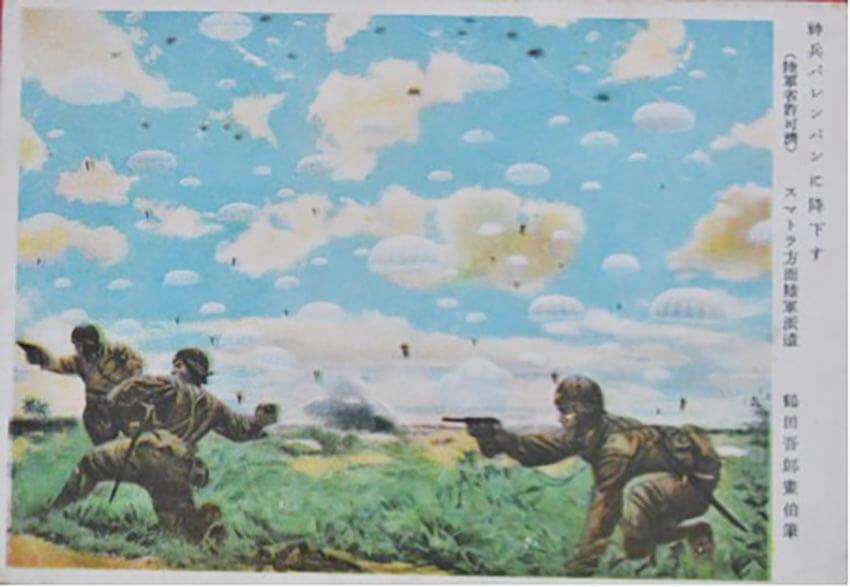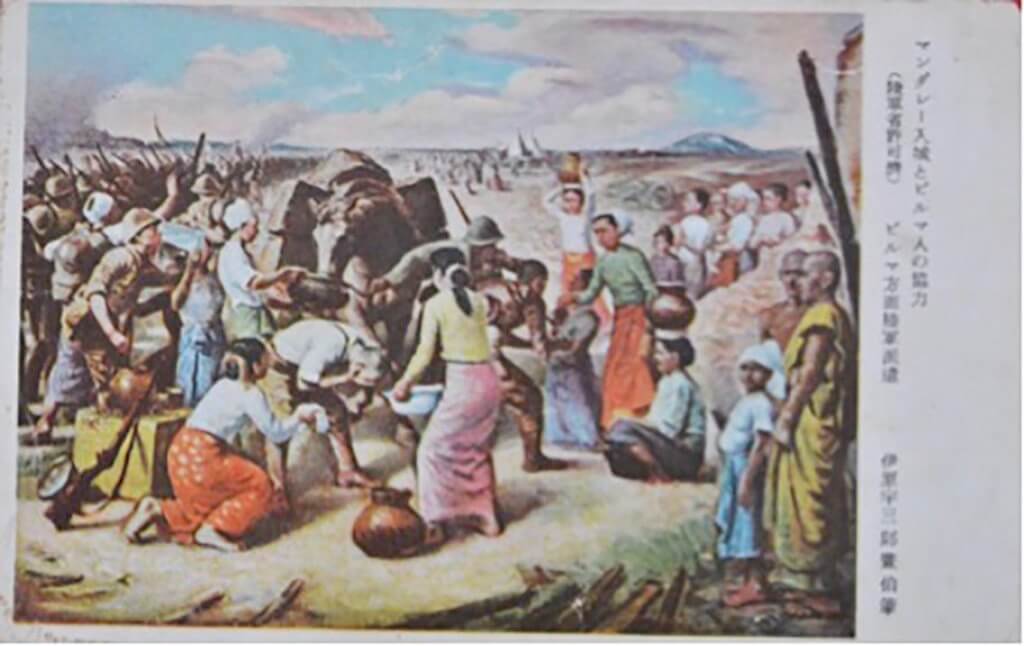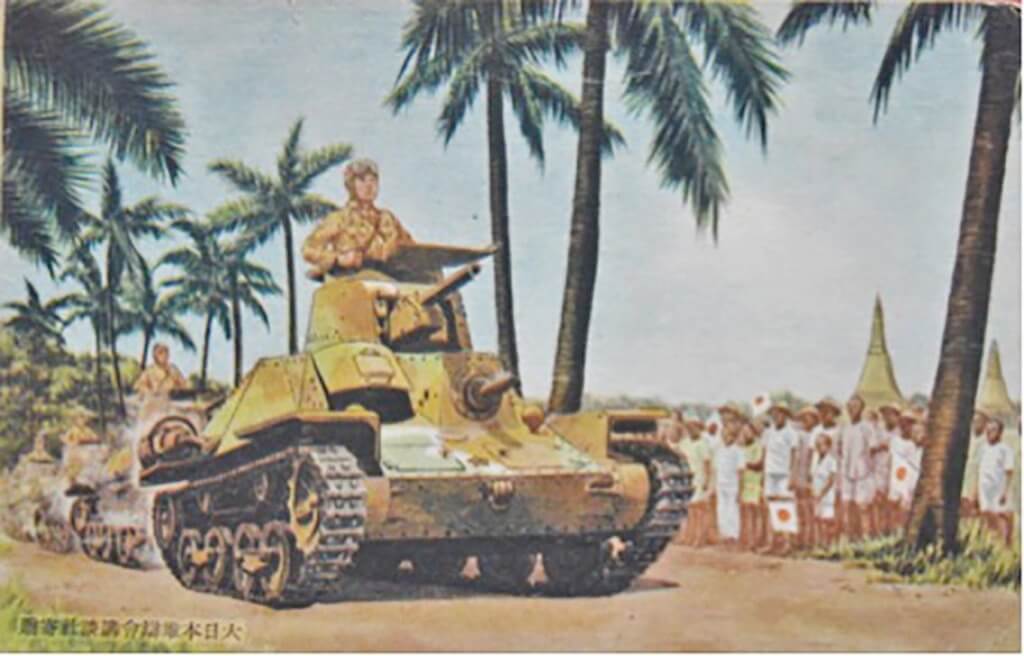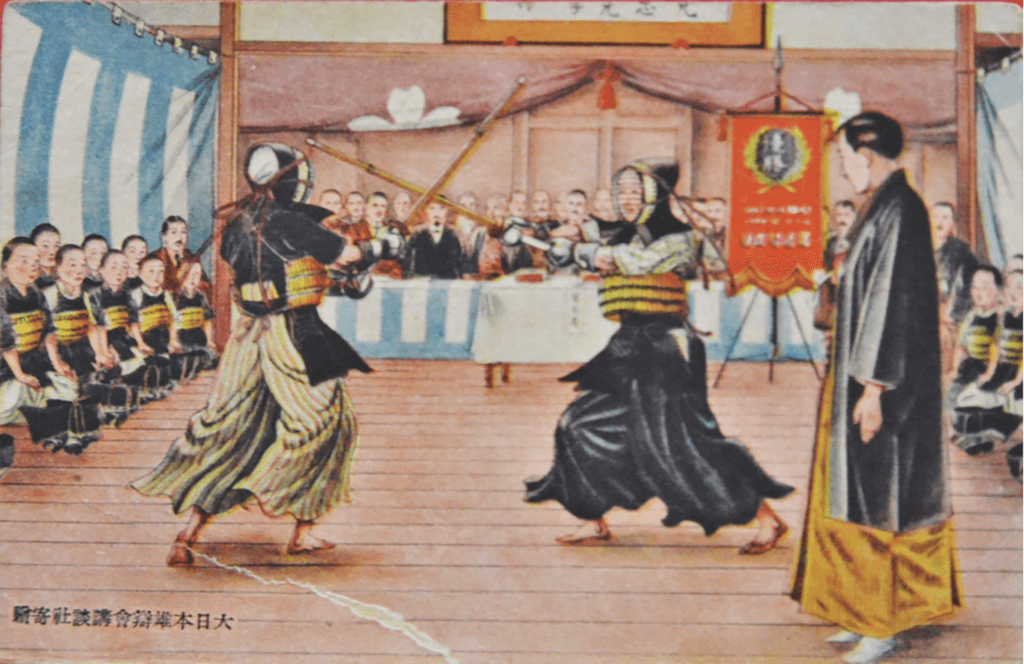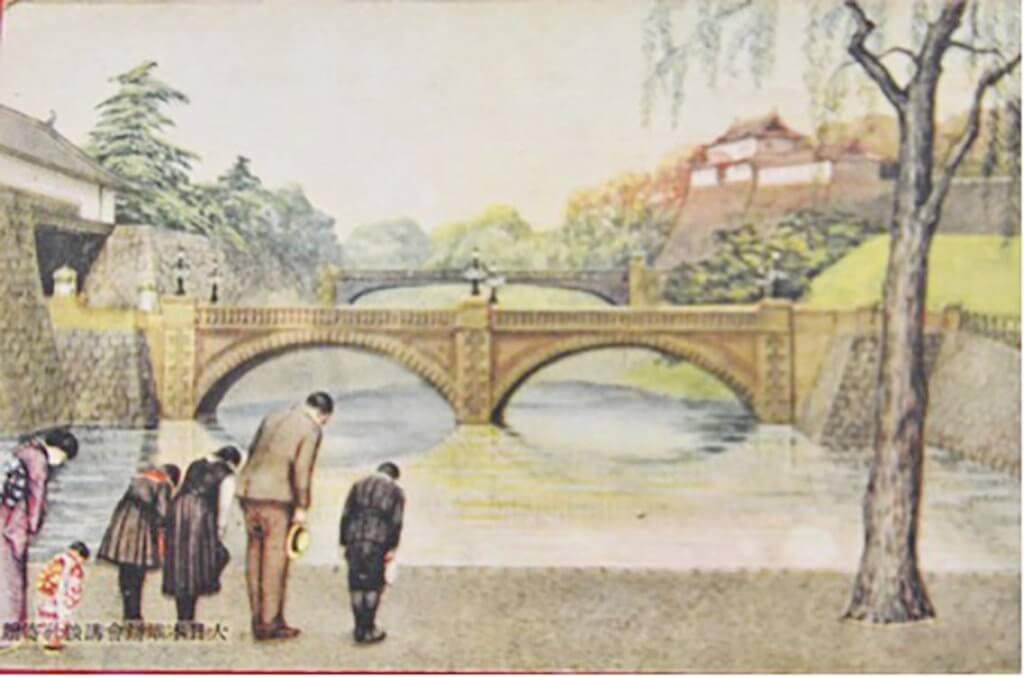Wartime Japanese Postcards
By San Lin Tun
You may be surprised to learn that, even in wartime, countries and their military used postcards, pamphlets and posters to amplify the propaganda messages from the countries they were occupying.
Many governments did this in wartime, not only the Japanese, as we show here. Governments understood that the beauty of postcards lay in how they aroused excitement and emotion and conveyed a story.
Japanese wartime postcards were used to spread propaganda; a strategy also known as sensōga(‘art as propaganda’). The purpose is seen clearly when you look at the old postcards here that were distributed during the Second World War.
When examining the images on the postcards, it is easy to understand what messages they aimed to convey to the public. Usually the images on the postcards showed how powerful and mighty the Japanese emperor or the Japanese military were. Japan’s Army Art Association (Rikugun bijutsu kyōkai), founded in 1939, employed well-known and talented Japanese artists to produce the images for these postcards.
When the Japanese troops entered Myanmar (Burma), they utilised the stamps of the departing British troops but printed peacocks over the old stamps to obscure their origin.
Sending and receiving letters was the only way to exchange news and was thus very important to the military. The “Double Bridge” in Tokyo, which is related to the Imperial Palace, was frequently portrayed on postcards. Some postcards show Shinto shrines because they were thought to represent the true Japanese spirit and mentality. Some show local crops and crafts, and sometimes Japanese archery. There are also postcards that show troops of tanks moving magnificently on parade grounds.
Some artists portray significant and remarkable South East Asian battles, especially those on Malaysian soil, such as ‘Paratroops attacking Palembang oil refinery’. They also portray paratroopers descending from their aircraft to the battlefields.
There are also some postcards relating to Myanmar. Examples show villagers coming out to meet the Japanese soldiers and giving them water. Local people liked to mingle with the Japanese soldiers. They thought they were bringing victory to local people and would help them to fight back against the British colonisers.
Among the postcards, one image drawn by cartoonist Yoshigaki Seiten stands out: it features a faceless Japanese soldier surrounded by happy-looking Asian kids, portraying the amiability of the soldier. This is a very creative strategy because the illustrator allows the viewer to complete the image: one could fill in the blank space with any face and that person would be revered as a guardian of Asian children.
Looking at the postcards tells us a lot, including how well organised the Japanese troops were in the Second World War. This gives us a way to study history through postcards, especially if the study falls into the category of postal history
San Lin Tun is a freelance writer of essays, poetry, short stories and novels in Myanmar and English language. His previous books include; Reading a George Orwell Novel in a Myanmar Teashop and Other Essays, The Enigma of Big Bunny’s Arrival and Other Short Stories, and his most recent work An English Writer. He lives in Yangon with his wife and two sons.
